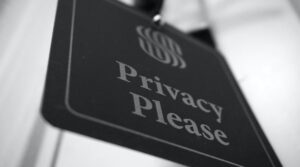Identity Theft is Currently on the Rise
When I worked in the District Attorney’s Office, it was not unusual that every once in awhile I would have a case involving the theft of a person’s identity, and the one thing that you hear from every victim of identity theft is that it is a nightmare to get their lives back. Credit reporting agencies all share information that your credit has been decimated because credit cards have been issued or checks written fraudulently with your personal information and purchases made that you didn’t make. Because of what I saw I’ve always been careful not to throw away or recycle credit card applications without removing all personal information, having nothing other than basic information on checks and having very few credit cards. I also periodically check my credit rating just to remain vigilant.
Then last week I got a call from one of my employees letting me know that unemployment benefits had been requested…by me. I was baffled and then got to see the letter sent to us by unemployment and it hit me that I was the victim of this crime.
Steps to Follow if Your Identity is Stolen
So what can you do if this happens to you? From what I have been hearing, it is happening a lot across the nation and it appears most states are setting up means for reporting unemployment ID fraud, you just have to find it. So here is what I found:
Step 1
Go to Colorado’s Department of Labor and Employment website and scroll down until you see a section called “For Individuals.” This then gives you a form to submit called an “Identity Theft Report” and you can submit it online.
Step 2
You want to go to step two in that section and it gives you a link to fill out a “U.S. Bank Form.” If you click on this, it gives you a form you can send to the entity, or you can call a phone number. I determined that the form was a pain to submit and called them. You can follow the menu and it tells you that there are extraordinary waits associated with making claims via phone. I decided to just wait and work while I was on hold, but in less than 3 minutes, a tech answered the phone and was very helpful. The purpose of this reporting is to cut off the ability for the thief to activate the bank card and drain it before the theft report circulates through the system and gets to the bank. As it turned out, a bank card had been issued and because I called right away they were able to disable the bank card before the thief could activate it.
Step 3
You need to notify the credit bureaus. The website has telephone numbers for each and I just called the first one. When you do, you have options of doing nothing, placing a fraud alert on your credit report, or going nuclear and disabling your credit reporting to prevent any possibility of thieves getting credit in your name. When I looked at it, the last option had other problems such as the fact that it could make it harder for me to get loans or credit myself, and they let you know that it could be harder to re-enable your account (or whatever they call them) later. On the other hand, placing a fraud alert just requires that merchants and others have to go to greater lengths to confirm your identity and it is only active for a year and then expires if you don’t renew it. The other thing is that if you disable your account, you have to notify each credit bureau individually, but if you place a fraud alert, you only have to notify one and they will notify the other two. I chose the fraud alert as I felt it provided the best protection with the least disruption of my personal life.
If you become a victim, it’s definitely a feeling of vulnerability that you experience with knowing someone has your information, but not knowing how much they have. Following this process can at least give you some peace of mind and the ability to regain some control.

